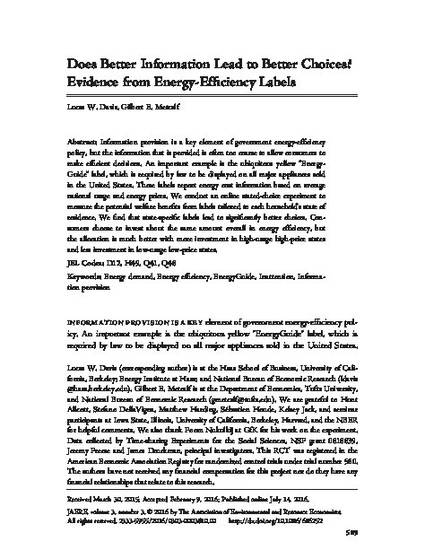
Article
Does Better Information Lead to Better Choices? Evidence from Energy-Efficiency Labels
Journal of the Association of Environmental and Resource Economists
(2016)
Abstract
Information provision is a key element of government energy-efficiency policy, but the information that is provided is often too coarse to allow consumers to make efficient decisions. An important example is the ubiquitous yellow “Energy-Guide” label, which is required by law to be displayed on all major appliances sold in the United States. These labels report energy cost information based on average national usage and energy prices. We conduct an online stated-choice experiment to measure the potential welfare benefits from labels tailored to each household’s state of residence. We find that state-specific labels lead to significantly better choices. Consumers
choose to invest about the same amount overall in energy efficiency, but the allocation is much better with more investment in high-usage high-price states and less investment in low-usage low-price states.
Keywords
- Energy Demand,
- Energy Efficiency,
- EnergyGuide,
- Inattention,
- Information Provision
Disciplines
Publication Date
2016
DOI
http://dx.doi.org/10.1086/686252
Citation Information
Lucas W. Davis and Gilbert E. Metcalf. "Does Better Information Lead to Better Choices? Evidence from Energy-Efficiency Labels" Journal of the Association of Environmental and Resource Economists Vol. 3 Iss. 3 (2016) p. 589 - 625 Available at: http://works.bepress.com/gilbert_metcalf/116/
